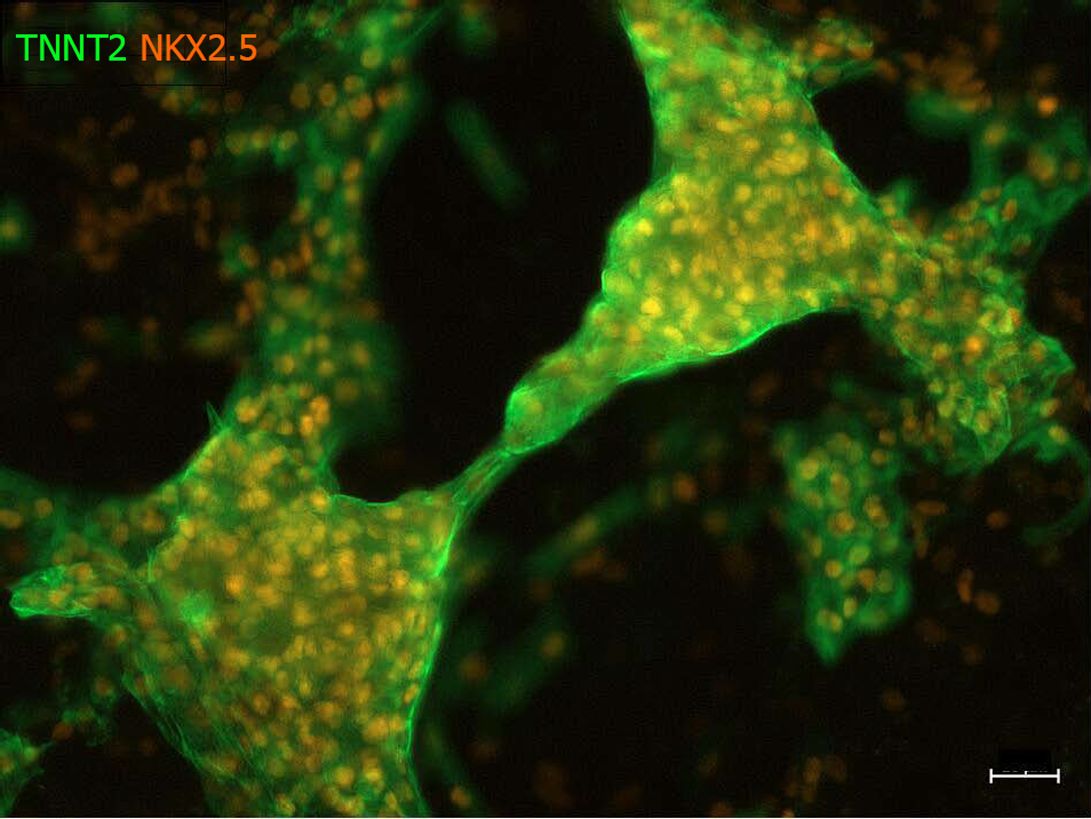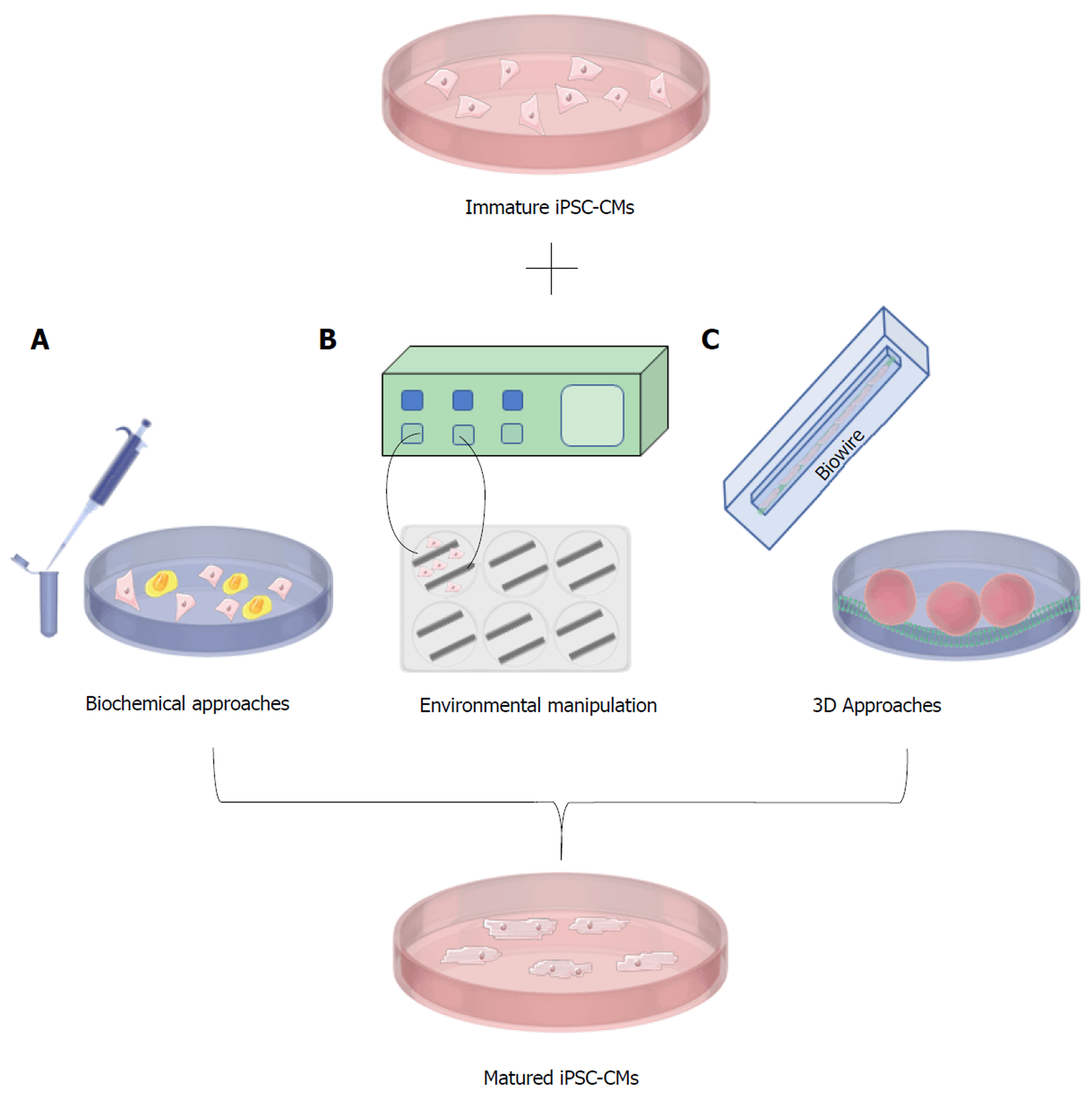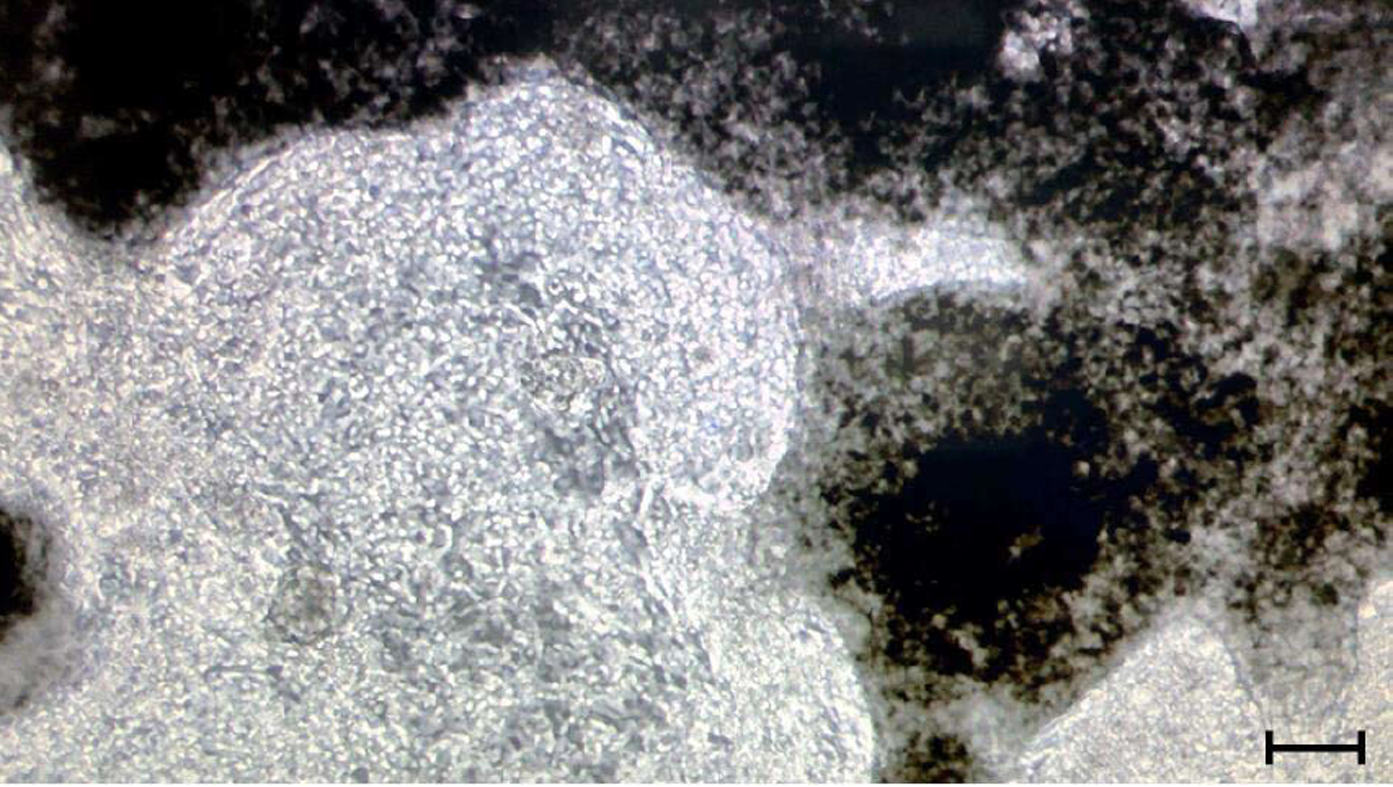Copyright
©The Author(s) 2019.
World J Stem Cells. Jan 26, 2019; 11(1): 33-43
Published online Jan 26, 2019. doi: 10.4252/wjsc.v11.i1.33
Published online Jan 26, 2019. doi: 10.4252/wjsc.v11.i1.33
Figure 1 Human induced pluripotent stem cell-derived cardiomyocytes.
Immunocytochemistry for TNNT2 cardiac marker (green) and NKX2.5 early-mesodermal marker (orange). HiPSCs were differentiated into hiPSC-CMs using ThermoFisher’s Cardiomyocyte Differentiation kit. IPSCs were grown in a 6-well plate, differentiated into hiPSC-CMs for 14 d, fixed, stained, and then imaged using an epi-fluorescence microscope. Scale bar indicates 20 μm.
Figure 2 Methods for the maturation of induced pluripotent stem cell-derived cardiomyocytes.
A: Biochemical approaches involving the use of small-molecules and hormones, along with co-incubation with human mesenchymal stem cells; B: Environmental manipulation illustrated through the use of electrical stimulation to mature iPSC-CMs; C: 3-dimensional approaches showcased by Biowire, and 3D cardiac organoid generation in ECM layered tissue-culture plates.
Figure 3 Induced pluripotent stem cell-derived cardiomyocytes in a 3-dimensional structure.
Phase contrast image of a 3D formation of induced pluripotent stem cell-derived cardiomyocytes. Control hiPSCs were differentiated into hiPSC-CMs using STEMCELL Technologies cardiomyocyte differentiation kit. Image was taken at day 14 of differentiation. Scale bar indicates 40 μm.
- Citation: Machiraju P, Greenway SC. Current methods for the maturation of induced pluripotent stem cell-derived cardiomyocytes. World J Stem Cells 2019; 11(1): 33-43
- URL: https://www.wjgnet.com/1948-0210/full/v11/i1/33.htm
- DOI: https://dx.doi.org/10.4252/wjsc.v11.i1.33











